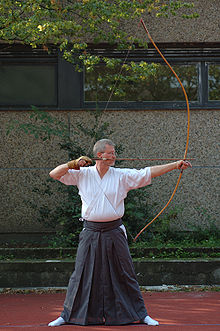Your Cart is Empty


Whether it's akidio, ninjutsu, iaido, jodo or judo, countless types of traditional Japanese martial arts involve a sash known as an obi. Even if you're unfamiliar with this piece of attire, you've probably heard of them before. The black belt in martial arts, for instance, is typically reserved for the master's class, whereas beginners start with a white obi. To learn more about the obi in traditional Japanese martial arts, keep reading.
Purpose of the Obi
The obi isn't designed strictly for looks; it has a very real purpose in traditional Japanese martial arts. As previously stated, it's used to denote the practitioner's rank in the respective martial art. In judo, beginners start with a red obi, followed by white with a red stripe, yellow, orange, green, blue, violet, brown, brown and black, black and red and white. In karate, beginners start with a white obi, followed by red, yellow, orange, green, blue, violet, brown and black.
It's important to note, however, that not all types of Japanese martial arts use color-based obis to define a practitioner's rank. In kendo, for instance, wearing an obi is optional and not required. Kendo practitioners can also a wear an obi of any color, as it holds no significance. In kendo, the obi is a component of the outfit worn by practitioners, but, like kendo, the color of the obi holds no significance.
Of course, there's also a strong traditional tied to the obi. Some of the first known uses of the obi date back to the 1600s, during which Japanese men and women would wear ribbons around their waist. Th obis were originally tied to the front, though the practice was later changed so that obis were tied to the side or back. Back then, obis were categorized by their level of formality, material of construction, use and design.
Construction of the Japanese Obi
Since its inception many centuries ago, little has changed regarding the obi's construction. They are typically made of thick cotton, with a width of roughly 2 inches (5 cm). The obi is typically secured to the martial art practitioner's waist using a koma-musubi knot. However, in martial arts where the practitioner wears a hakama, the obi is secured using other methods. In aikido, wearing a hakama is generally a privilege that's designated only for practitioners who achieve the first dan level.
After reading this, you should have a better understanding of the Japanese obi and its significance.